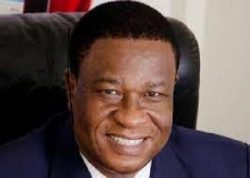Government missed out on its inflation target for year 2017 by 0.6 percentage points, ending the year with 11.8 percent against a target of 11.2 percent, the Ghana Statistical Service’s (GSS) December release has shown.
The figure also represents a 0.1 percentage point rise over the 11.7 percent recorded in November 2017.
Also compared to the same period last year, inflation ended with 15.4 percent against a target of 10.1 percent.
Commenting on what accounted for the marginal increase in December, the Acting Government Statistician of the GSS, Baah Wadieh, attributed it to a rise in the rate of some non-food items.
“We have items like clothing and footwear, transport, recreation and culture, furnishing and routine maintenance, which all recorded rates above the national average and were the key drivers for the marginal rate rise in December,” he said.
Details of the release indicate that the non-food group recorded a year-on-year inflation rate of 13.6 percent in December. Four subgroups recorded rates higher than the group’s average of 13.6 percent.
These are clothing and footwear, which recorded the highest rate of 18.8 percent, followed by transport with 18.7 percent; recreation and culture with 17.5 percent; and furnishing, household equipment and routine maintenance with 15.2 percent. Health recorded the least with 6.3 percent.
In the food and non-alcoholic beverages group, inflation recorded was 8 percent – a 0.1 percentage point higher than that of November 2017.
Two subgroups recorded rates higher than the group’s average. These are vegetables which recorded 10 percent, and fish and sea food at 8.8 percent.
Inflation for imported items was also 13.6 percent, representing 2.5 percentage points higher than that of locally produced items which recorded 11.1 percent.
In regional terms, four regions – Upper West, Greater Accra, Brong Ahafo, and Ashanti – all recorded rates higher than the national average of 11.8 percent.
The Upper West Region recorded the highest rate with 12.8, followed by Greater Accra Region with 12.7 percent, Brong Ahafo 12.4, and Ashanti with 12.2.
The Upper East Region, however, recorded the least with 10.2 percent.
Meanwhile, government has set an end of year inflation target of 8.9 percent, and a medium-term target of 8±2 percent.










